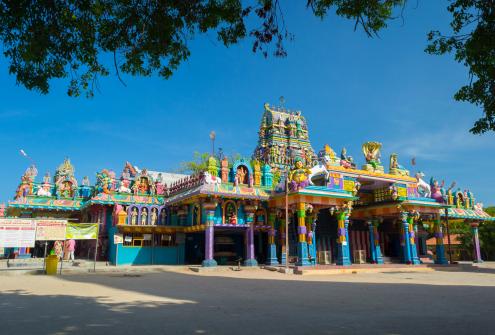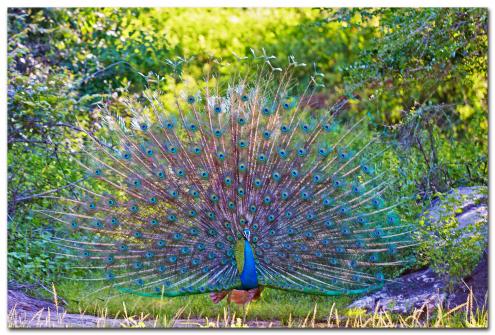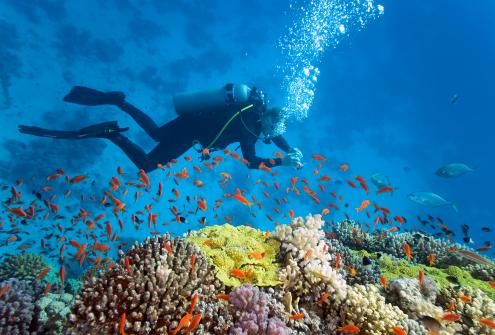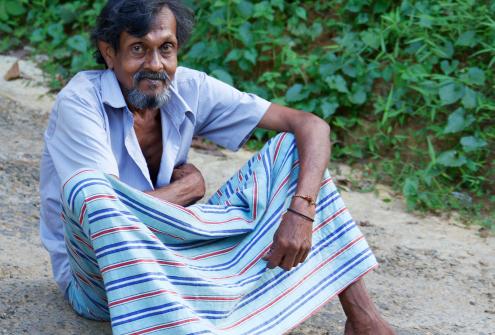Best Time to Visit: May - Aug ; ill advised: Dec - March
Jaffna
Slowly but surely re-emerging Jaffna is once again welcoming visitors and looking to open its doors to visitors. For an off-the-beaten-track holiday where you can gain insight into the rich Tamil culture and Hindu heritage, the North is a tranquil uncharted region of Sri Lanka.
Characterized with growing Palmyra trees and crumbling buildings, some iconic locations and attractions remain well preserved for sightseeing, such as the Nallur Kandaswamy Kovil which holds the longest festival annually in Sri Lanka. The Jaffna Fort is another popular landmark of the colonial era, and visits to the islands of Kayts, Neduntivu (referred to as Delft Island), and Nainativu are possibilities now. The islets surrounding the region such as Nainativu (or Nagadeepa), is a well-known pilgrimage site for the local Buddhist and Hindus that have drawn visitors for centuries. Religious symbology of Buddhism and Hinduism can be found throughout the North, and attractions such as Keerimalai, the Kadurugoda temple with its ruins, and even the ancient port of Dambakola are much renowned for their beauty.
Beyond the city of Jaffna limits, however, you can also do suburban excursions by bicycle or explore the northernmost point of Sri Lanka at the Sakkotai Cape. For bird lovers, the Chundikulam Bird sanctuary is a must as it lies on the north-eastern shoreline of the country.
Jaffna is an intriguing, unimposing, and mostly unexplored place that's a thoroughly rewarding place to invest a few days when discovering Sri Lanka. Food of traditional Tamilian cuisine is cooked with love and served fresh in the forms of dosa, idli, or vada. With most of the main dishes being vegan or vegetarian, it remains on the most part quite healthy and very affordable. Although for seafood lovers, there are popular dishes such as the Jaffna kool, (made with palmyra incorporating the fresh catch of the day from the lagoon) is said to be like a bouillabaisse of Sri Lanka. For those with a sweet tooth but are at the same time health-conscious, the Palmyra palm treacle with buffalo curd is a must as its silky-smooth texture derives from buffalo milk. Also, to beat the heat, most tourists local and foreign pay a visit to the Rio ice cream parlour which is a pleasant treat at the end of sightseeing.
Apart from the historic sites and the heritage, Jaffna has some of the most beautiful unspoiled beaches of Sri Lanka. Famous beaches include the Kankesanthurai (KKC) beach, the Casuarina beach, the Charty beach, the Akkarai Beach, and the Karainagar beach. Most of these beaches are deserted with little or no people and the sea has dark blue waters and waves that lull and beat gently on the shores. Casuarina, palmyra, and coconut trees are planted along the coast of most beaches and the shallow lagoons are used to farm crab, prawn, and lobster. Away from the maddening crowds and the usual tourists, Jaffna shorelines are quiet areas of tranquillity.
As refugees and exiles return to rebuild the city, confidence and finances are returning. The city is surprisingly green and leafy, with attractive palm-shaded colonial-era suburbs and beautiful temples and churches. Physically, new structures (including the city's first shopping mall) and upgraded road, rail, and air connections are inspiring optimism. But you’ll appreciate Jaffna more for its insights into the Tamil people and their struggle more than anything else.











